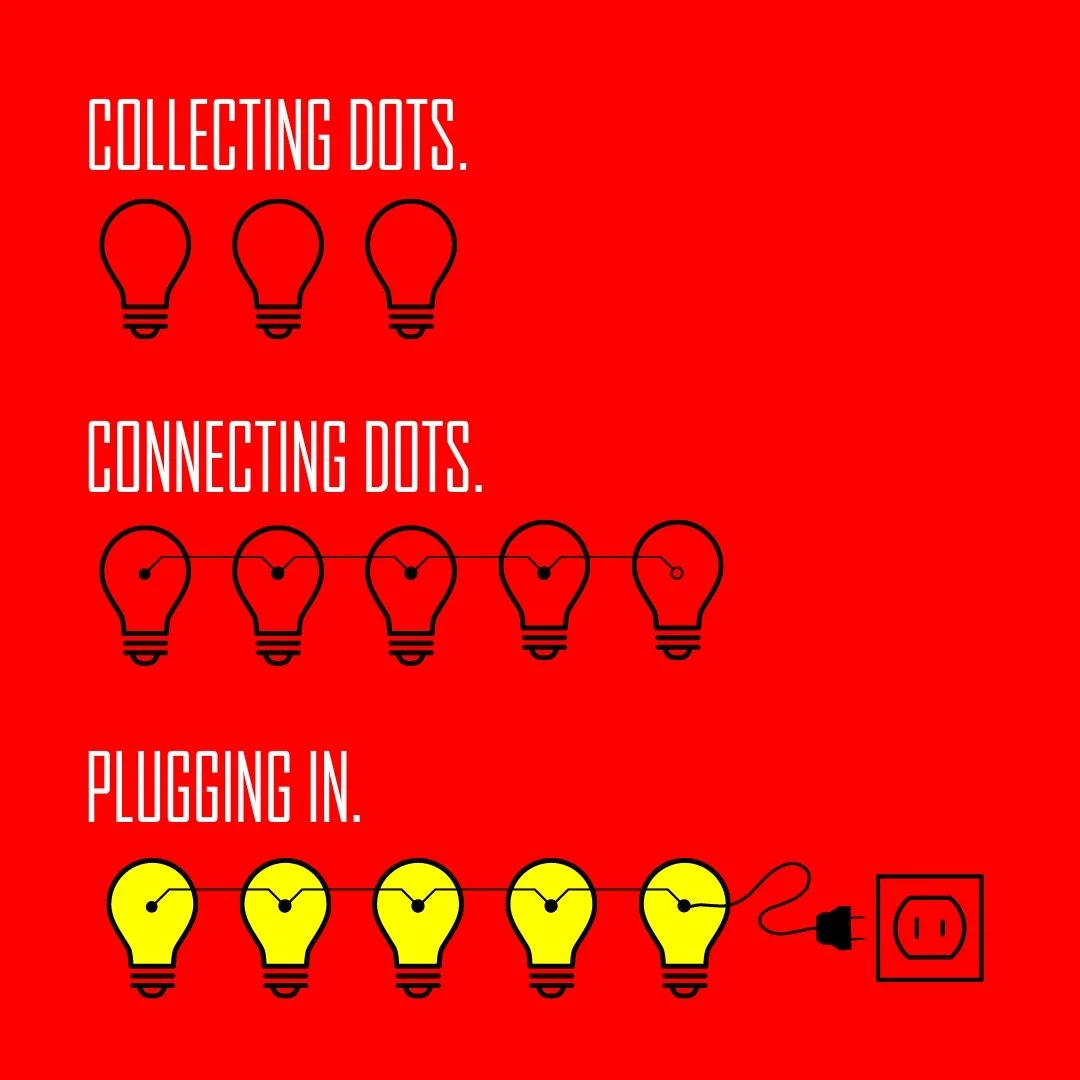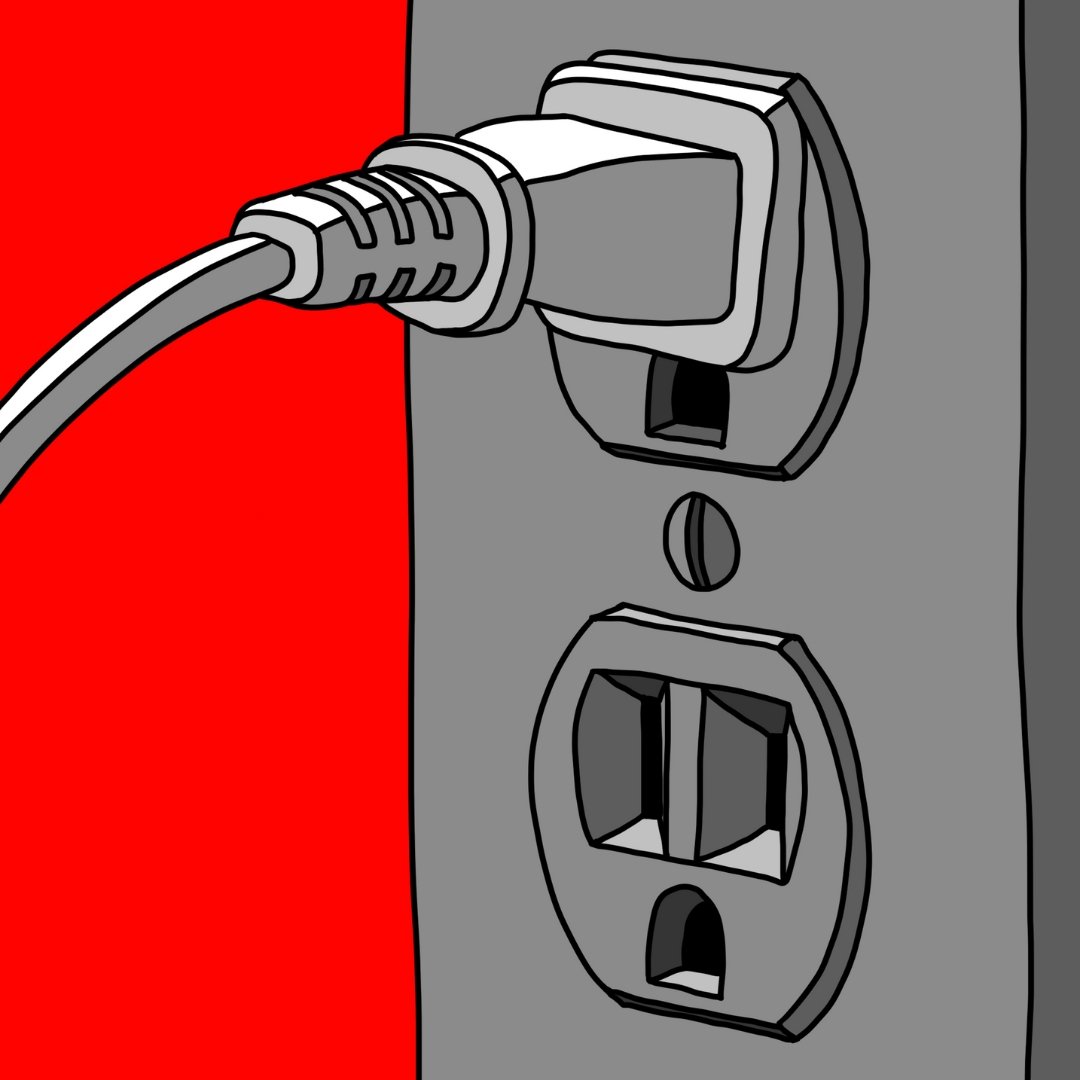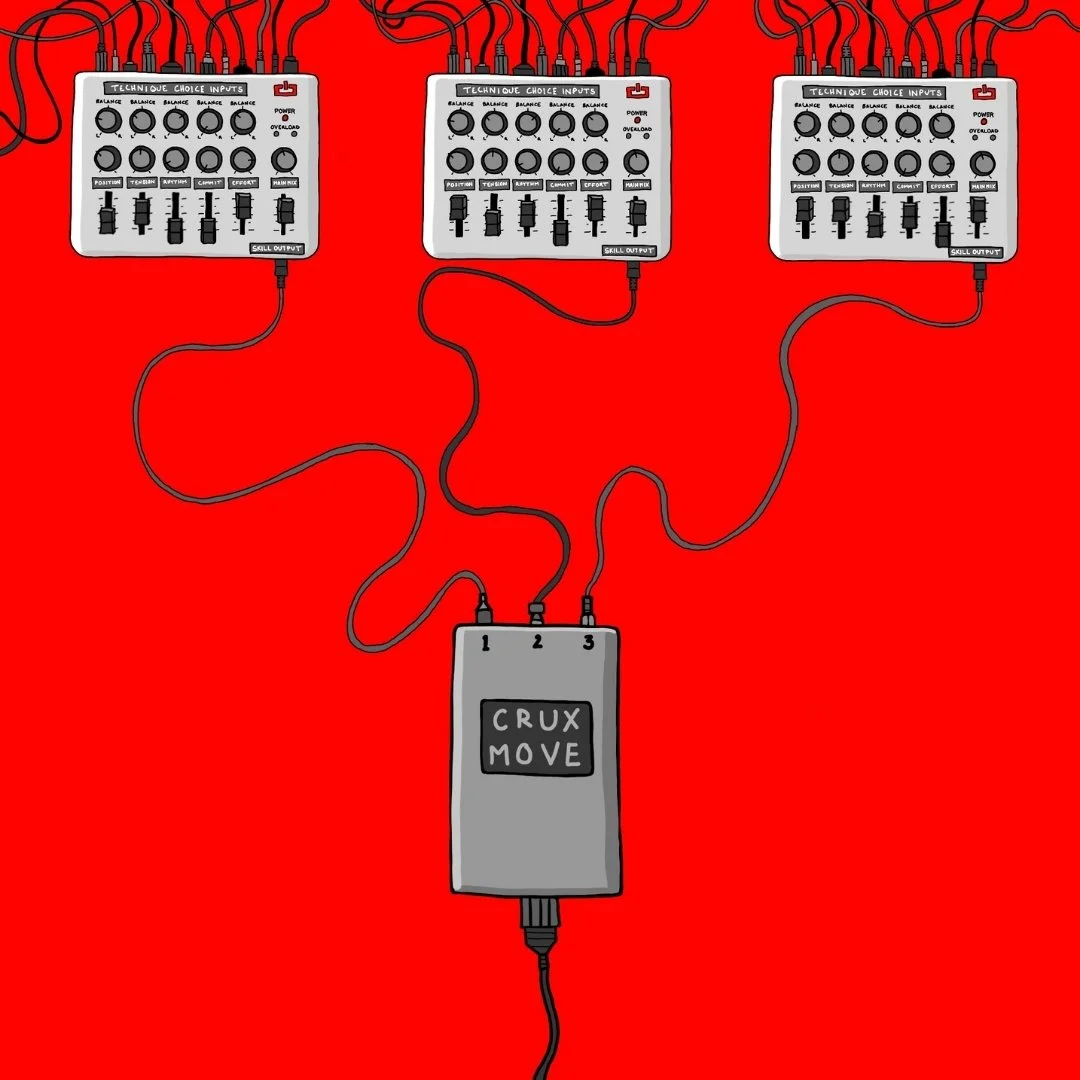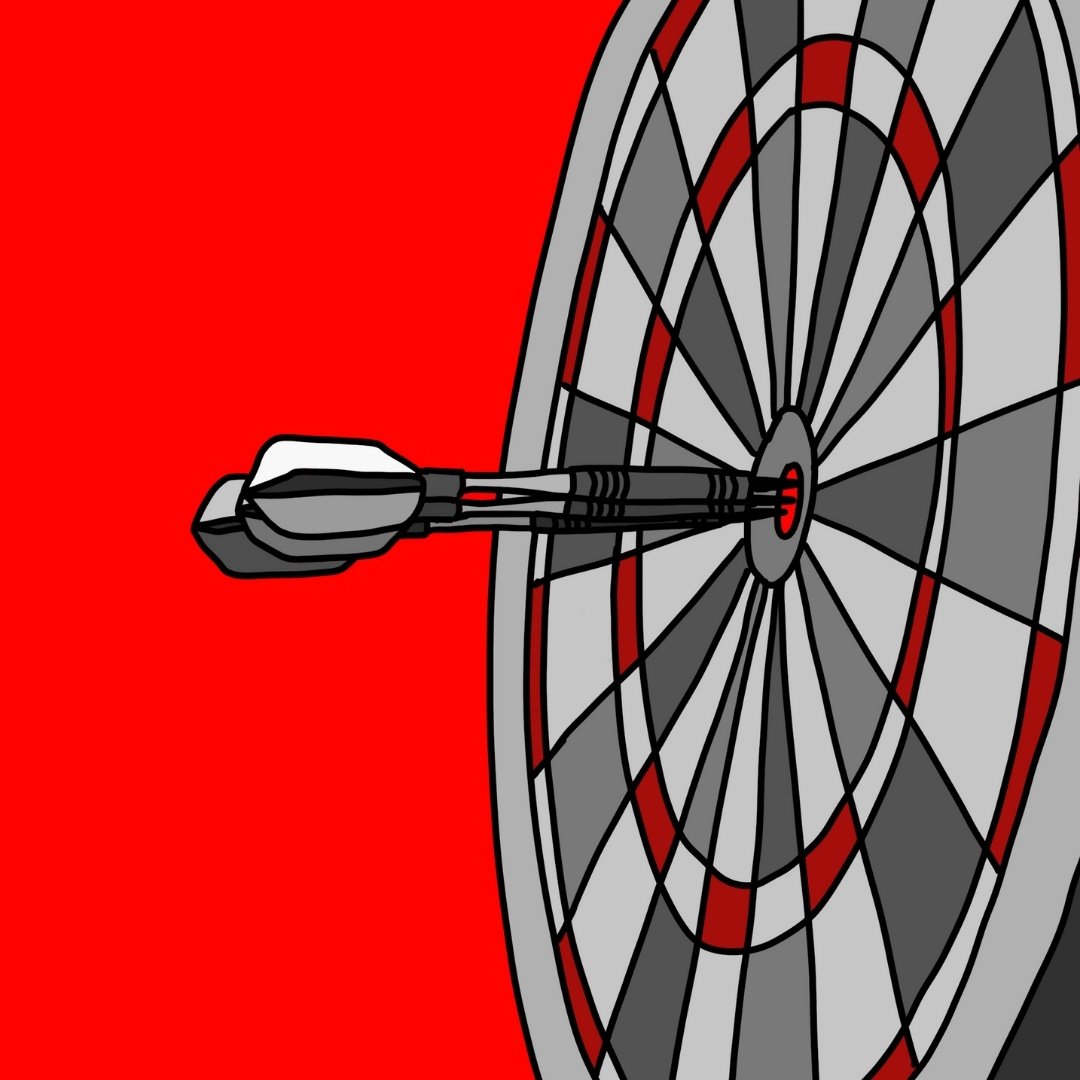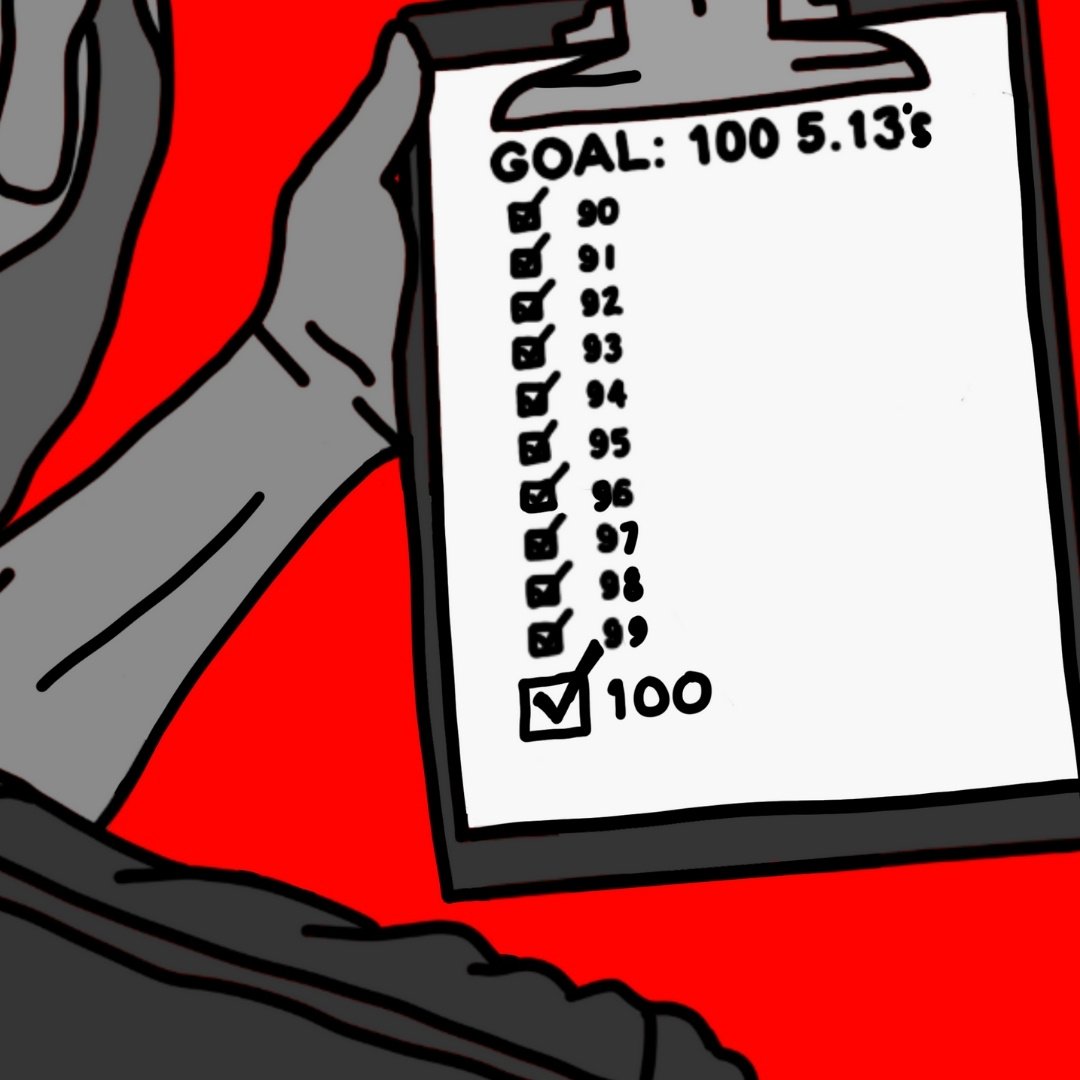Plugging In To Climb Better
“Always be learning,” is a phrase I live by.
I love the feeling of connecting the dots between things I’ve read about or recently heard someone discuss. I mean, that’s what I’d like this newsletter to become – a source of lightbulb moments for all of you, particularly in this world of information overload.
But like everything else, there’s a trap we have to be careful to avoid.
That addicting feeling of learning and lightbulbs can easily result in a loop where we never actually take the time to apply the new insight we’ve gained.
Throughout these several months of diving deep into learning about movement, I recognize that I’m in danger of entering this loop. There is always more to learn. More theories, more perspectives, more ideas.
One of my favorite rappers, Aesop Rock, on the song “Get Out of the Car” from his album The Impossible Kid, wrote;
Knowing ain’t half the battle.
That’s a bullshit quip written by some asshole.
He’s right.
Particularly when it comes to climbing better, knowledge alone isn’t all that helpful.
I want to collect and then connect the dots, but we also have to plug it into practice or it’s largely useless. More overload.
In a recent episode, the first of our new BUILDER series, with Lauren Abernathy, I told her about a recent big win I had. If you’re a Patron you already know that I’m on a quest to finish 100 5.13’s before I turn 50 this October, and I recently climbed my 87th or 88th of the grade, Dogs of War, in Sinks Canyon. On it, I had perhaps my most pointed reminder that the movement practice I’ve been doing is working.
First off, I’m leaning into the discomfort of an angle I’m not great at: slightly overhanging with small holds and smaller feet. Second, for the past three years I’ve been working on full crimping, as well as a movement weakness I discovered: while I’m usually good in small boxes, this falls apart when it’s a gaston with a high foot, particularly if that gaston needs to be held in a full crimp.
Kryptonite.
I could have, like so many people do, just said “I’m bad at gastons,” and then start some shoulder strengthening program. Or “I’m bad at high feet,” and leaned hard into better mobility. But I knew that neither of those things were generally true, so a general ‘fix’ seemed like a dumb idea.
Instead, I tried to see this challenge through the lens of the movement themes I’d recently started exploring, and initially I was sure it was all about Tension and Position. I had discovered several moves in the gym that I could do easily if I pulled on there, but I couldn’t find the right shoulder position if I climbed into them. Something was blocking my transition into the correct position every time. I also couldn’t sequence the tension correctly. I could feel that I was tensioning the lower body and the chest and shoulder, but I’d lose tension in the core. Or vice-versa.
And this was only happening in this particular position and variations of this position. What gives?
One day while climbing with Rowland Chen, and trying one of these moves, he made a comment that proved to be the key I needed.
“Either go dynamic or go static, but you can’t do both. Make a choice.”
Honestly, it didn’t unlock right away. It took some time to really sink in.
Whenever I got into these positions, I had options. Several affordances were available. I could go dynamically. I’m decent at it. Or I could lock it down and go static. I’m decent at that, too. But I was ending up in the middle. Setting up in Position as if I were going to go static, and then Tensioning as if I were going to go dynamic. And that was throwing off my Rhythm.
The lightbulb was starting to glow.
The crux of Dogs of War revolves around one bad hold. A tiny left hand edge. To my delight, when I encountered it, I immediately discovered a perfect thumb catch at a spot where I needed it while holding the edge in half crimp. I could tag a gaston with my right hand, smear a foot on a glassy knob, and lurp to the jug. I did it first try, but it also felt a little harder than I wanted it to.
So I explored, because, tactics.
I quickly discovered that there was a higher thumb catch that essentially put me in full crimp. And if I used it, I was creating tension such that hitting the gaston felt more controlled. AND, with that new control, I could high-step to another edge and then hold the tension on the gaston to go controlled to the mini-jug with the other hand, putting me into a better position for the next move.
In the moment, I moved on to the top, learning moves and stances. It wasn’t until I’d lowered down that I realized what had happened.
I had just reached a new level of understanding.
For the first time, I’d opted for a full crimp AND a small box gaston without having to analyze it. I’d chosen the static method when lurping was a distinct possibility and the full crimp when I’d already done the move using a grip I very much prefer and consider a superpower. At an angle that’s far from my most comfortable.
Most important, I understood why. Old dog, new tricks.
In that moment, I felt like I’d become a better climber. Like I’d just passed a graduate exam. Three years of work culminated in one single short sequence, and it didn’t even slow me down.
Three years.
Not every session for those three years was spent on movement, of course, and it was within a theoretical framework that I was testing and formulating all at the same time. But the lesson remains.
Being consistently intentional is the best way to change your movement.
I suspect that as we get older and more experienced, and closer to the hardest thing we’ll ever do, these lessons will not only get more and more specific, but they’ll also take more time to show up in performance that’s been solidified (or fossilized) by habit and routine. Climbers who are earlier in their journey, where the tactics and approach are more malleable, will see the effects of a dedicated, intelligent practice much more readily.
So don’t wait. Start now.
CONNECTING THE DOTS
I haven’t done a great job of connecting dots lately. I’ve mostly been collecting and solidifying dots that I already had. That does, however, put me in a position to do some robust dot connecting.
In our most recent EXPERT episode with Taylor Reed, as well as in one that you will hear soon with Udo Neumann, it was particularly nice for me to hear from high-level climbing coaches about how they are integrating ecological dynamics and the constraints-led approach into their coaching, and how they struggle with it.
Both coaches often wonder how much the athlete actually needs to know, and that made me wonder how much you – the listener – needs to know. Problem is, I’m often talking to both coaches and climbers. What this means is that we need to go deep, which we’ve done a lot of recently, but I also have to strip away the annotations and technical terms and give practical ways that we can apply this stuff, which frankly, I haven’t done enough of lately.
In service of the goal of more practical information, we’re doing several things. Number one, we’ve decided to put more effort into our YouTube channel as a teaching tool. Our new Taped Tips video, The Secret to Hard Moves that Most Climbers Are Missing, has gotten great feedback. Check it out and let me know your thoughts.
Second, and more important, I’m working on an ebook and mini-course that will, within this thematic framework I’ve been exploring, help climbers assess and improve their movement skills in a more efficient and interesting way. Because knowing where to start and where to go are both difficult when it comes to improving movement. Perhaps finger strength is so much more popular simply because that path is more clear? Not sure. Either way, I’ll let you know when the course is ready, or you can sign up for updates at the Power Company Climbing Academy.
If you’re a coach, my Coaching for Mastery course goes into the practical side of coaching movement, and I’ll be adding new material to that as well.
And speaking of assessing and where to start, Nate was recently a guest on The Struggle Climbing Show, where he essentially does a consultation with the host, Ryan, and analyzes his movement via video. Definitely worth a listen, as are many of The Struggle episodes.
And please, let me know how your own movement practice or coaching is going. What are the wins? Where are you struggling? Drop a comment below.
If you’re reading this, you’re probably someone who enjoys thinking deeply about how we can improve as climbers. If you also enjoy brainstorming and discourse, I’d love your feedback. If you have a lightbulb moment or a big question that hasn’t been answered, just drop a comment below. Or Instagram, or Patreon, or wherever. Just send it.
That's how we all get better. Together.
– Kris
Related Things to Stay Current:
Check out our Movement Practice Resource Page.
Check out the latest YouTube video.
Subscribe to the podcast on your favorite pod player.
If you’re a coach, our Coaching for Mastery course is a good start for our upcoming deep dive into movement learning.
An ongoing Spotify playlist with all of our past movement focused episodes.
Subscribe to THE CURRENT to get these monthly thoughts in your inbox.


